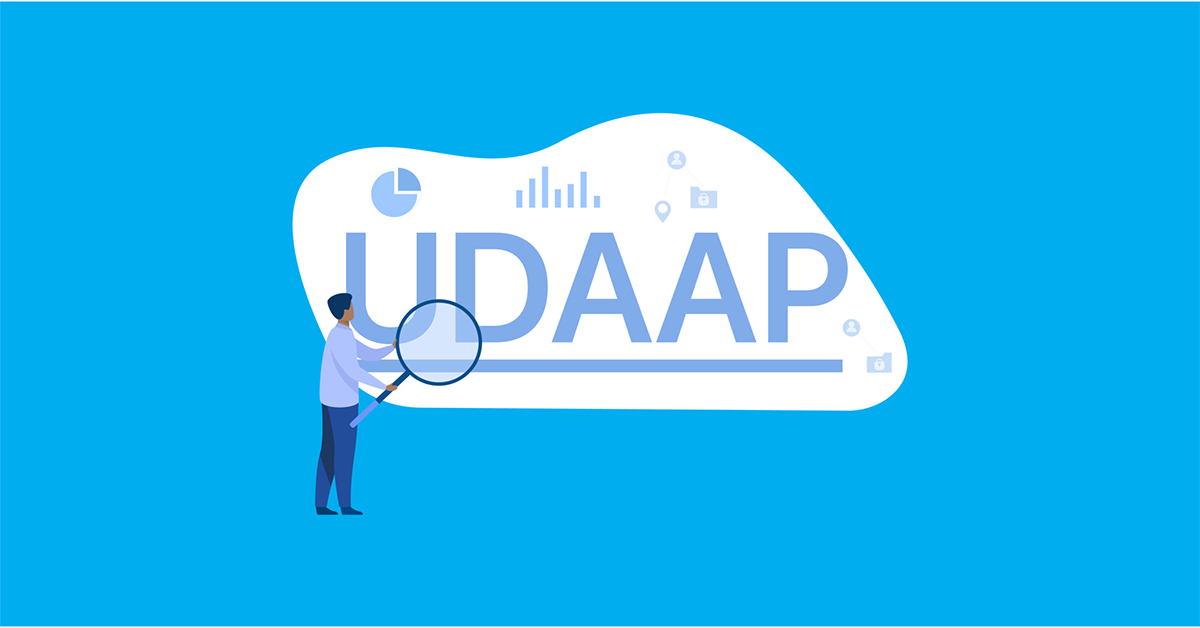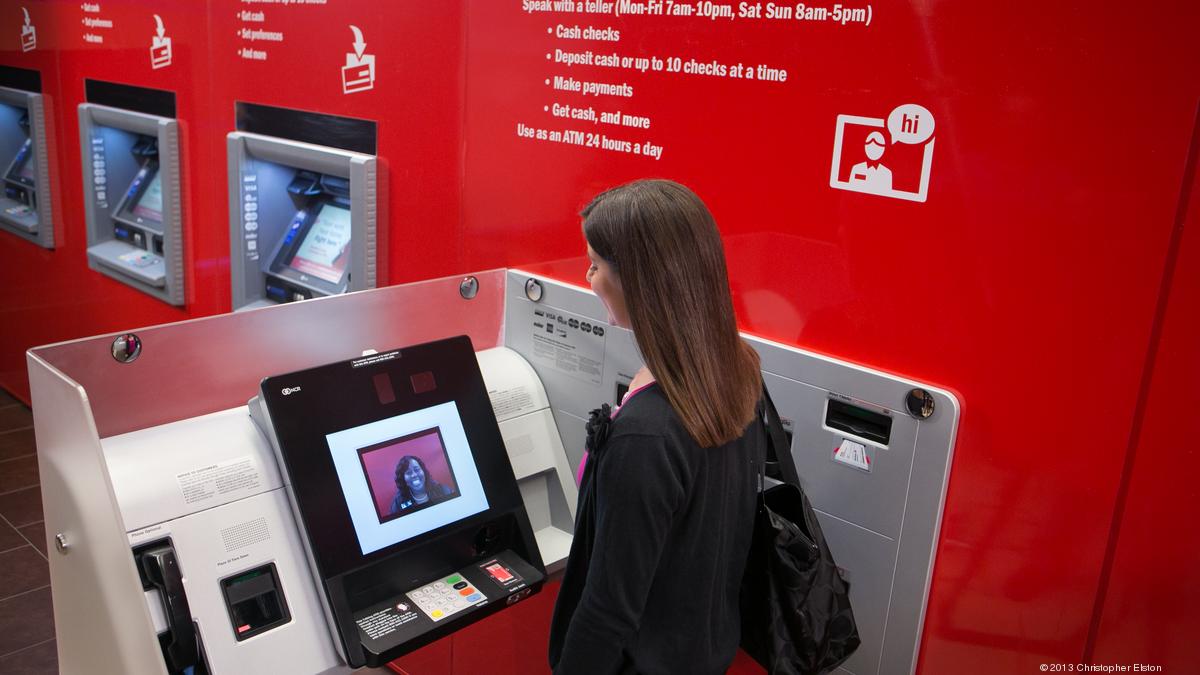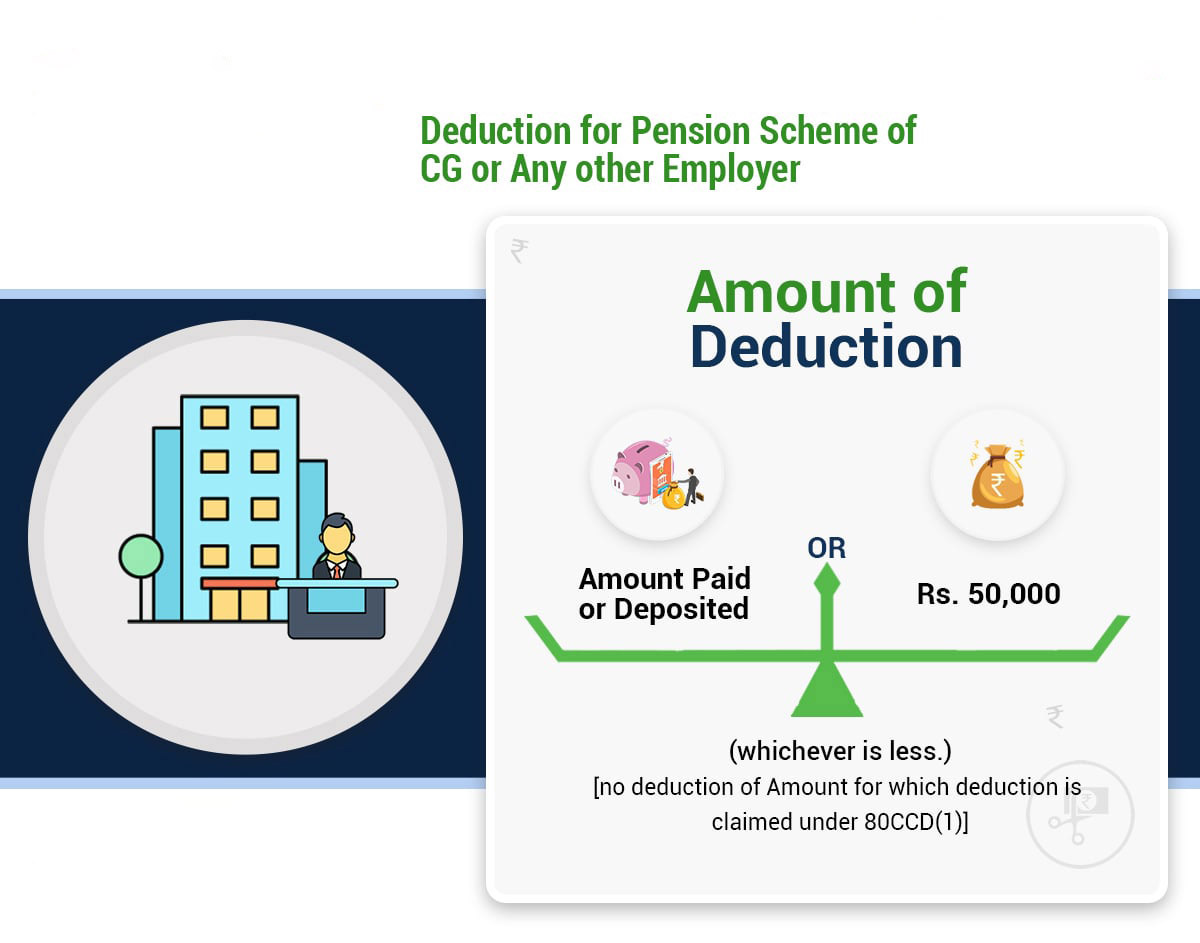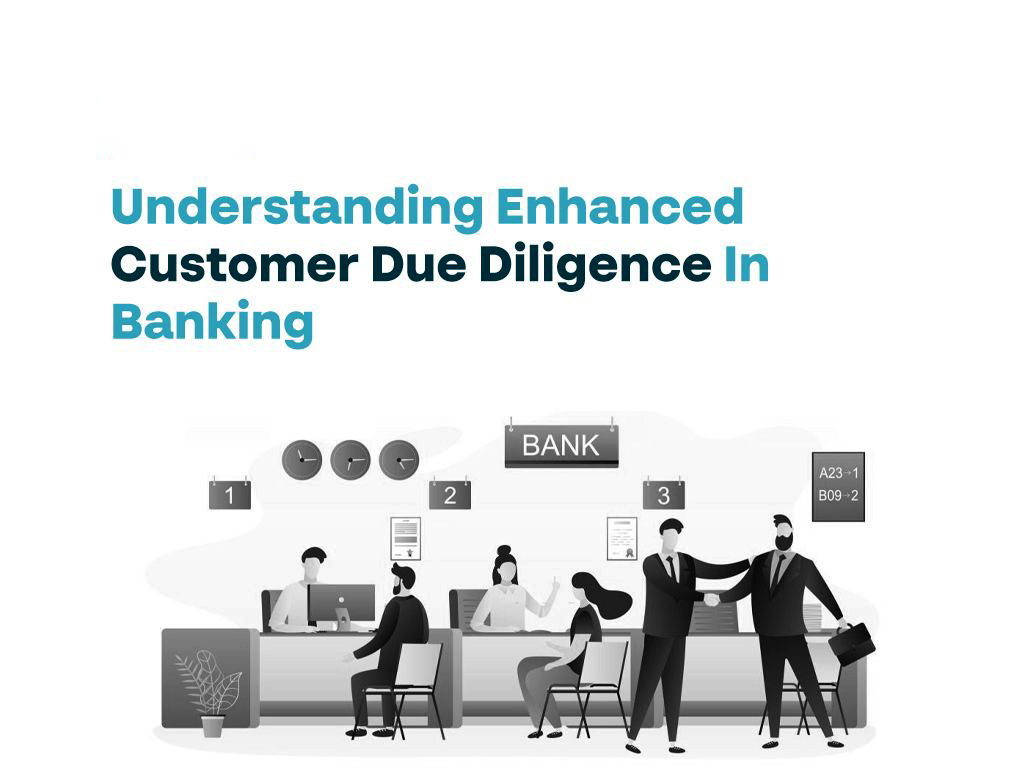

Finance
What Is UDAAP In Banking
Modified: March 1, 2024
Learn about UDAAP in banking and its impact on finance. Understand the regulations and guidelines to ensure fair and transparent practices in the financial industry.
(Many of the links in this article redirect to a specific reviewed product. Your purchase of these products through affiliate links helps to generate commission for LiveWell, at no extra cost. Learn more)
Table of Contents
Introduction
In the world of banking and finance, ensuring fair and transparent practices is paramount to maintaining the trust and confidence of customers. To achieve this, regulatory bodies have implemented various measures to safeguard consumers from unfair treatment or deceptive practices. One such important regulation is UDAAP, which stands for Unfair, Deceptive, or Abusive Acts or Practices.
UDAAP is a term widely used in the banking industry to refer to actions or practices that can harm consumers or mislead them in any way. The regulation aims to protect consumers’ interests and welfare by establishing guidelines and standards that banks and other financial institutions must comply with.
Understanding and adhering to UDAAP regulations is crucial for banks to maintain a positive reputation and avoid costly legal repercussions. By following these regulations, banks can build strong relationships with their customers, enhance transparency, and contribute to the overall stability and integrity of the financial system.
In this article, we will delve deeper into what UDAAP entails, its significance in the banking industry, and the implications of non-compliance.
Definition of UDAAP
UDAAP, which stands for Unfair, Deceptive, or Abusive Acts or Practices, is a set of regulations enforced by regulatory bodies, such as the Consumer Financial Protection Bureau (CFPB) in the United States, to protect consumers from harmful practices in the banking industry.
Let’s break down each component of UDAAP:
- Unfair: Unfair acts or practices refer to actions that cause or are likely to cause substantial injury to consumers, which cannot be reasonably avoided, and are not outweighed by countervailing benefits to consumers or to competition.
- Deceptive: Deceptive acts or practices involve misleading or false representations, omissions, or practices that are likely to deceive consumers. This could include providing incorrect or incomplete information about products, services, fees, terms, or conditions.
- Abusive: Abusive acts or practices are actions that take unreasonable advantage of a consumer’s lack of understanding, inability to protect their own interests, or the consumer’s reasonable reliance on the financial institution. This includes imposing unreasonable fees, manipulating consumers into unnecessary transactions, or engaging in coercive tactics.
These regulations aim to ensure that banks and financial institutions treat consumers fairly and transparently. By complying with UDAAP standards, banks establish a level playing field for customers and foster trust and confidence in the financial system.
It is important for banks to have a clear understanding of what constitutes unfair, deceptive, and abusive practices, as well as the potential consequences of non-compliance. The regulations help to protect the rights and interests of consumers by holding financial institutions accountable for their actions and promoting a fair and competitive marketplace.
In the following sections, we will explore the importance of UDAAP in the banking industry and dive into each component in more detail, providing examples and insights to enhance our understanding.
The Importance of UDAAP in Banking
UDAAP regulations play a crucial role in the banking industry by promoting fair and transparent practices, protecting consumers’ rights, and ensuring a level playing field for all stakeholders. Let’s explore why UDAAP is important:
- Consumer Protection: UDAAP regulations are designed to safeguard consumers from unfair treatment and deceptive practices. Banks are required to provide accurate and transparent information about products, services, fees, terms, and conditions, allowing customers to make informed decisions. This protection helps prevent financial harm and promotes trust between consumers and financial institutions.
- Market Integrity: UDAAP regulations contribute to maintaining the integrity of the financial market. By establishing clear guidelines for fair and ethical practices, these regulations create a level playing field for financial institutions to compete based on the quality of their products and services rather than through misleading or abusive tactics. This fosters healthy competition, promotes innovation, and enhances market efficiency.
- Reputation and Trust: Compliance with UDAAP regulations is crucial for banks to build and maintain a positive reputation. Banks that prioritize consumer protection and adhere to fair practices are more likely to earn the trust of their customers. This trust leads to stronger customer relationships, increased loyalty, and positive word-of-mouth, which are all vital for long-term success in the financial industry.
- Legal Compliance: UDAAP regulations are enforced by regulatory bodies, and non-compliance can result in serious legal consequences. Banks that fail to adhere to these regulations may face fines, penalties, and reputational damage. By proactively complying with UDAAP requirements, banks can mitigate the risk of costly legal proceedings and maintain a strong compliance culture.
- Enhanced Consumer Financial Literacy: UDAAP regulations indirectly contribute to improving consumer financial literacy. By promoting transparency and accurate information, consumers are empowered to make informed decisions about their financial well-being. This awareness helps individuals understand their rights, responsibilities, and available options, leading to better financial outcomes and improved overall financial literacy.
Overall, UDAAP regulations have a profound impact on the banking industry by protecting consumers, ensuring fair competition, and maintaining the integrity of the financial system. By prioritizing compliance with UDAAP standards, banks can establish themselves as trusted institutions and contribute to a more transparent and customer-centric financial industry.
Understanding Unfair Practices
Unfair practices, as defined under UDAAP regulations, are actions or practices that can cause substantial harm to consumers and cannot be reasonably avoided. Let’s explore some key aspects of unfair practices:
1. Substantial Injury: Unfair practices refer to actions that can cause significant harm or financial loss to consumers. This can include imposing excessive or hidden fees, misleading consumers about the terms or risks associated with a product or service, or engaging in discriminatory practices that disadvantage certain groups of customers.
2. Lack of Reasonable Avoidance: Unfair practices are actions that consumers cannot easily avoid or mitigate on their own. These practices may deceive or take advantage of consumers who have limited knowledge or understanding of complex financial products or services. They may also exploit consumers’ vulnerabilities or lack of accessible alternatives.
3. Balancing Consumer Benefits and Competition: UDAAP regulations consider the balance between consumer benefits and the competition landscape. While some practices may be deemed unfair to consumers, if they promote competition or provide substantial benefits to consumers, they may not be considered unfair under UDAAP guidelines. The key factor is whether the potential harm outweighs the benefits to consumers or competition.
Examples of unfair practices in the banking industry include:
- Charging excessive or hidden fees without providing sufficient information to consumers.
- Manipulating interest rates or terms of loans to exploit borrowers.
- Discriminating against certain groups of customers based on characteristics such as race, gender, or religion.
- Misrepresenting the risks or benefits associated with a financial product or service.
- Engaging in predatory lending practices that target vulnerable or underserved communities.
By understanding and identifying unfair practices, banks can proactively take steps to eliminate or mitigate them. This involves transparent communication, fair pricing, providing clear disclosures, and ensuring products and services are designed to benefit consumers without causing substantial harm.
By adhering to UDAAP regulations and avoiding unfair practices, banks can build trust, enhance the overall reputation of the industry, and protect consumers from financial harm.
Understanding Deceptive Practices
Deceptive practices, as defined by UDAAP regulations, involve misleading or false representations, omissions, or practices that have the potential to deceive consumers. Let’s explore some key aspects of deceptive practices:
1. Misleading Information: Deceptive practices encompass any actions or communications that provide inaccurate, incomplete, or misleading information to consumers. This can include false statements regarding the benefits, risks, fees, terms, or conditions of a financial product or service.
2. Reasonable Consumer Perspective: Evaluating deceptive practices requires considering the reasonable expectations and understanding of an average consumer. If an average consumer is likely to be misled or deceived by the information or actions, it may be considered a deceptive practice under UDAAP guidelines.
3. Materiality: Deceptive practices typically involve material information, which refers to information that a reasonable consumer would consider important when making a decision about a financial product or service. If material information is misrepresented or omitted, it can lead to consumer harm or an unfair advantage for the financial institution.
Examples of deceptive practices in the banking industry include:
- Misrepresenting the interest rates or fees associated with a loan.
- Providing false or misleading information about the benefits or risks of an investment product.
- Omitting important terms or conditions from a contract or agreement.
- Using deceptive advertising or promotional materials to lure customers into engaging with a financial institution.
- Engaging in bait-and-switch tactics, where a different product or terms are offered after initially advertising an attractive offer.
Financial institutions must ensure that their communications and disclosures are clear, accurate, and provide a complete understanding of the products and services offered. By avoiding deceptive practices, banks can establish trust with their customers and maintain the integrity of the industry.
Compliance with UDAAP regulations requires financial institutions to conduct regular reviews of their marketing materials, contracts, and customer communications to ensure they are free from any misleading or deceptive information. Such proactive measures help protect consumers, promote transparency, and maintain a level playing field in the financial marketplace.
Understanding Abusive Practices
Abusive practices, as defined under UDAAP regulations, are actions that take unreasonable advantage of a consumer’s lack of understanding or inability to protect their own interests. Let’s explore some key aspects of abusive practices:
1. Unreasonable Advantage: Abusive practices involve actions or practices that exploit consumers by taking advantage of their vulnerabilities or limited knowledge about financial products or services. These practices can harm consumers financially or impede their ability to make informed decisions.
2. Lack of Consumer Understanding: Abusive practices target consumers who may not fully comprehend the implications or consequences of their financial decisions, and who rely on the expertise of the financial institution. The abusive actions can manipulate or deceive consumers into engaging in transactions that are not in their best interests.
3. Reasonable Reliance: Abusive practices can also occur when consumers reasonably rely on the financial institution to act in their best interests but are instead subjected to unfair or deceptive practices. This can include coercive tactics, intimidation, or taking advantage of a consumer’s trust.
Examples of abusive practices in the banking industry include:
- Using high-pressure sales techniques to convince customers to purchase unnecessary products or services.
- Charging excessive fees or imposing penalties that are out of proportion to the actual costs incurred by the financial institution.
- Unauthorized withdrawals or transactions that exploit a consumer’s lack of vigilance or monitoring.
- Engaging in debt collection practices that are intimidating, harassing, or abusive.
- Engaging in discriminatory practices that unfairly target specific groups of consumers.
Financial institutions must prioritize the well-being and interests of their customers. By avoiding abusive practices, banks can demonstrate their commitment to consumer protection and foster a relationship built on trust and integrity.
Compliance with UDAAP regulations requires financial institutions to review their policies, procedures, and customer interactions to identify and eliminate any abusive practices. It is essential for banks to prioritize transparency, provide clear and accurate information, and ensure that customers are fully aware of their rights and options.
By maintaining a strong compliance culture and consistently meeting UDAAP standards, banks can protect consumers, uphold their reputation, and contribute to a fair and responsible financial industry.
Consequences of UDAAP Violations
Violating UDAAP regulations can have serious consequences for financial institutions. Regulatory bodies, such as the Consumer Financial Protection Bureau (CFPB) in the United States, enforce UDAAP compliance and can impose various penalties and sanctions. Let’s explore the potential consequences of UDAAP violations:
1. Legal Penalties: Non-compliance with UDAAP regulations can lead to significant legal penalties. Regulatory bodies have the authority to levy fines on financial institutions that engage in unfair, deceptive, or abusive practices. These fines can vary in amount depending on the severity of the violation and can result in substantial financial losses for the institution.
2. Reputation Damage: Violating UDAAP regulations can severely damage the reputation and credibility of a financial institution. Negative publicity surrounding unfair or deceptive practices can lead to a loss of trust and confidence among customers, shareholders, and the general public. Rebuilding a tarnished reputation can be a long and arduous process, potentially leading to a loss of customers and investors.
3. Legal Action by Consumers: Consumers who have suffered financial harm as a result of UDAAP violations may pursue legal action against the financial institution. This can result in expensive lawsuits, settlements, or compensation payments. Additionally, class-action lawsuits can be filed on behalf of a group of consumers who have been impacted by the same UDAAP violation, further increasing the financial and reputational implications for the institution.
4. Regulatory Scrutiny and Oversight: UDAAP violations can trigger increased regulatory scrutiny and oversight of the financial institution. Regulatory bodies may conduct investigations, audits, or examinations to ensure compliance with UDAAP regulations. This heightened attention can lead to more frequent reporting requirements, additional compliance measures, and increased costs to rectify any identified issues.
5. Loss of Business Opportunities: Financial institutions that have a history of UDAAP violations may face difficulties in securing partnerships, attracting investors, or acquiring other companies. Potential business opportunities can be lost due to concerns about compliance, ethical practices, and potential legal liabilities.
6. Remediation Costs: In addition to legal penalties, financial institutions may be required to undertake remediation efforts to rectify any harm caused to consumers. This could involve reimbursing affected customers, implementing new policies and procedures, enhancing employee training, and strengthening internal controls. These remediation costs can be substantial and further impact the financial stability of the institution.
It is crucial for financial institutions to prioritize UDAAP compliance to avoid these detrimental consequences. By upholding fair, transparent, and ethical practices, banks can protect their reputation, build trust among customers, and maintain a strong position within the industry.
Regulatory Measures for UDAAP Compliance
Regulatory bodies have implemented various measures to ensure UDAAP compliance in the banking industry. These measures help to establish clear guidelines and standards that financial institutions must follow to protect consumers and maintain the integrity of the financial system. Let’s explore some of the key regulatory measures for UDAAP compliance:
1. Guidelines and Regulations: Regulatory bodies, such as the Consumer Financial Protection Bureau (CFPB) in the United States, establish comprehensive guidelines and regulations to define unfair, deceptive, and abusive practices. These guidelines serve as a framework for financial institutions to understand and comply with UDAAP standards.
2. Examination and Audits: Regulatory bodies conduct regular examinations and audits of financial institutions to assess their compliance with UDAAP regulations. These examinations evaluate internal processes, policies, and procedures to ensure they align with UDAAP guidelines. Financial institutions must be prepared to demonstrate their adherence to UDAAP standards during these examinations.
3. Enforcement Actions: Regulatory bodies have the authority to take enforcement actions against financial institutions that violate UDAAP regulations. These enforcement actions can include fines, penalties, consent decrees, and restitution to affected consumers. Financial institutions that repeatedly engage in UDAAP violations may face more severe enforcement actions, such as consent orders or even revocation of their license to operate.
4. Consumer Complaint Handling: Regulatory bodies provide mechanisms for consumers to report complaints against financial institutions for potential UDAAP violations. These complaints serve as an additional source of information for regulatory bodies to identify and investigate potential non-compliance. Financial institutions are required to address and resolve these complaints in a timely and satisfactory manner.
5. Education and Outreach: Regulatory bodies engage in educational initiatives to raise awareness and promote understanding of UDAAP regulations among both financial institutions and consumers. They provide guidelines, resources, and training materials to help financial institutions comply with UDAAP standards. Consumers are also provided with educational resources to better understand their rights and responsibilities.
6. Risk Management and Compliance Programs: Financial institutions are responsible for establishing robust risk management and compliance programs to ensure UDAAP compliance. These programs include regular risk assessments, employee training, internal controls, monitoring systems, and corrective actions to mitigate UDAAP risks. Effective risk management and compliance programs are vital to detecting and preventing UDAAP violations.
Financial institutions must prioritize UDAAP compliance to avoid regulatory penalties and protect their reputation. By staying informed about regulatory guidelines, conducting regular risk assessments, and implementing strong compliance programs, banks can demonstrate their commitment to consumer protection and maintain a strong compliance culture.
Key Considerations for Banks
Complying with UDAAP regulations is essential for banks to protect consumers, uphold their reputation, and ensure a fair and transparent financial industry. Here are some key considerations for banks to keep in mind:
1. Policies and Procedures: Banks should establish robust policies and procedures that align with UDAAP regulations. These policies should address fair and transparent practices, accurate disclosures, and protection of consumer interests. Regular reviews and updates are necessary to ensure ongoing compliance.
2. Employee Training: Proper training is crucial to ensure employees understand UDAAP regulations and their responsibilities in upholding them. Banks should invest in training programs to educate employees on fair practices, avoiding deceptive behavior, and providing accurate information to customers.
3. Transparent Disclosures: Banks must provide clear and understandable disclosures to consumers regarding fees, terms, risks, and any potential changes to products or services. These disclosures should be easily accessible and prominently displayed to ensure consumers have the necessary information to make informed decisions.
4. Proactive Compliance Monitoring: Regular monitoring and internal audits help banks identify and rectify any potential UDAAP violations. By proactively reviewing customer interactions, marketing materials, and internal processes, banks can detect and address any non-compliant practices before they escalate.
5. Complaint Handling: Banks should have a robust system in place for handling consumer complaints related to UDAAP issues. Timely and fair resolution of complaints demonstrates a commitment to customer satisfaction and helps identify areas for improvement in compliance efforts.
6. Ethical Sales Practices: Banks should focus on building long-term relationships with customers based on their needs and financial well-being. Sales practices should be driven by ethical considerations, avoiding aggressive tactics or misleading information that could potentially lead to UDAAP violations.
7. Vendor Management: Banks need to ensure that their vendors and third-party service providers also comply with UDAAP regulations. Proper due diligence and monitoring of vendors’ practices and procedures help mitigate the risk of UDAAP violations that could indirectly impact the bank and its customers.
8. Continuous Compliance Assessment: Compliance with UDAAP regulations is an ongoing effort that requires regular assessment and improvement. Banks should regularly review their policies, procedures, and systems to identify any gaps or areas for enhancement and make necessary adjustments to ensure continued compliance.
By making UDAAP compliance a priority and considering these key factors, banks can demonstrate their commitment to consumer protection, maintain a strong reputation, and contribute to a fair and trustworthy financial industry.
Conclusion
UDAAP regulations, which encompass Unfair, Deceptive, or Abusive Acts or Practices, are of utmost importance in the banking industry. These regulations serve to protect consumers, promote transparency, and maintain the integrity of the financial system.
Understanding and adhering to UDAAP standards is crucial for banks to build trust, maintain a positive reputation, and avoid legal repercussions. By acting in good faith, providing transparent information, and prioritizing consumer interests, banks can establish long-term relationships with customers and contribute to a fair financial marketplace.
From unfair practices that cause substantial harm to consumers, deceptive practices that mislead customers, to abusive practices that take advantage of vulnerabilities, UDAAP regulations offer a framework for banks to identify and eradicate these behaviors from their operations.
The consequences of UDAAP violations are significant and can range from financial penalties and legal actions to reputational damage and loss of business opportunities. It is imperative for banks to implement strong risk management and compliance programs, conduct regular training for employees, and maintain transparent communication with consumers.
Regulatory measures, such as guidelines, examinations, complaint handling mechanisms, and education initiatives, provide a foundation for banks to understand and comply with UDAAP standards. By staying informed about regulatory updates and continuously monitoring their practices, banks can ensure ongoing compliance and mitigate the risk of violations.
Ultimately, prioritizing UDAAP compliance is not only a legal obligation but also an ethical responsibility of financial institutions. By treating customers fairly, providing clear and accurate information, and upholding consumer protection, banks can foster trust, maintain a competitive edge, and contribute to a robust and trustworthy financial industry.














